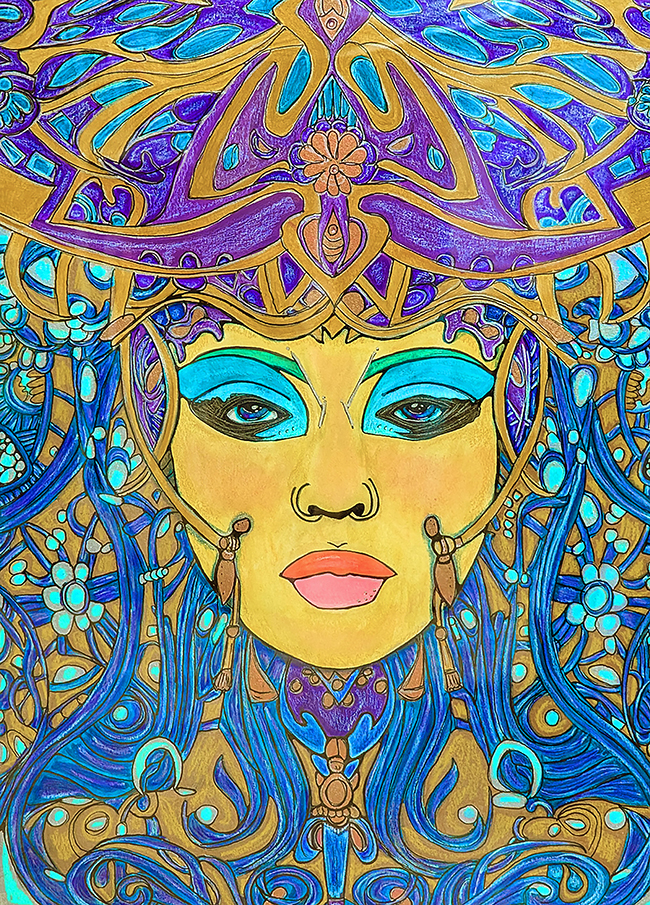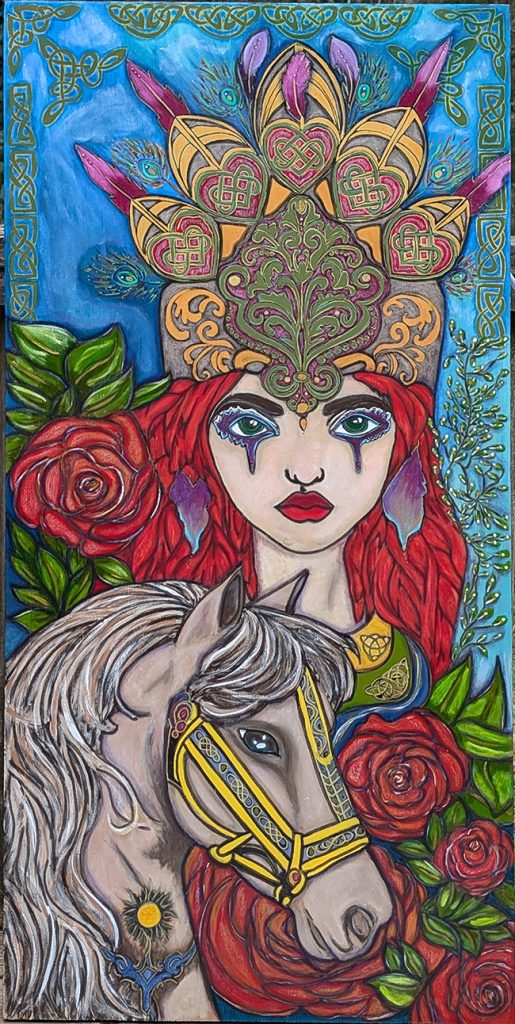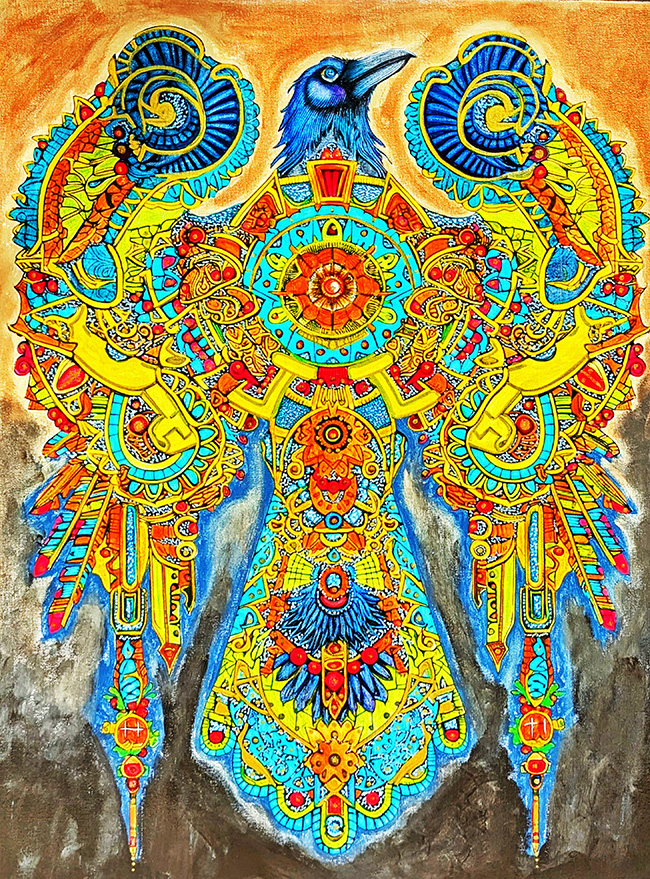Some artists show you what’s already there. Kimberly McGuiness does something different—she creates what feels remembered rather than seen. Her work isn’t about observation. It’s about channeling. Every piece seems to arrive with its own voice, shaped by mythology, nature, and the quiet pull of emotion. Her art doesn’t describe a world—it becomes one.
McGuiness works with recurring themes: horses that move like freedom, peacocks rich with presence, talismans and oracles full of mystery. These aren’t visual accents—they’re carriers of meaning. She pulls from the natural world, ancient stories, and the dreamy theatrics of circus life. What results is a kind of living folklore. Each painting feels like a ritual, each symbol a memory waiting to rise.
Her art doesn’t shout. It listens. It holds space. Let’s step into three of her pieces—each one carrying its own spirit, message, and terrain.

Zephira the Oracle of the Realm of Beneath & Becoming
Zephira isn’t just an image. She’s a force. She lives below the surface, in the realm of what’s hidden, what’s growing, what’s not yet spoken. This isn’t darkness in a negative sense—it’s the richness of soil, the depth of water, the hush of something waiting to bloom.
McGuiness frames Zephira as the keeper of emotions and memory—an oracle who doesn’t predict the future, but helps shape what’s possible. Her message is simple but loaded: “What you bury becomes what you bloom. Tend it with intention.” It asks the viewer to consider what’s been ignored or left behind, and what could grow from it if cared for.
Visually, this piece likely flows. The energy is inward, layered, calm but powerful—like roots shifting beneath earth or water carving its own path. Zephira isn’t about drama. She’s about presence. You don’t look at her. You sit with her.

Celtic Warrior
Aislinn rides into this painting with purpose. She’s not a fantasy character. She’s part of a story older than any one image. McGuiness gives her weight. There’s heritage in her bones and sacrifice in her breath. Her “Crown of Thorns and Valor” isn’t decorative—it’s a burden and a badge.
The roses blooming behind her feel like echoes of what she’s overcome. They don’t erase her pain—they acknowledge it. She moves forward with the sun behind her, the land ahead. This isn’t triumph in the Hollywood sense. It’s resilience. Survival. Beauty that has nothing to prove.
In this work, there’s likely contrast—sharp forms and soft edges, golden light and deep shadow. And through it all, Aislinn. She doesn’t need an audience. She’s already rooted in the soil she defends.

The Talisman
This piece doesn’t offer a clear path. It watches. It waits. The Talisman isn’t a thing to understand. It’s something to feel. It holds energy from forgotten places—memory, myth, stardust. Each feather, each mark, each symbol points toward something beyond the surface.
But this isn’t a safe object. It’s a mirror. To wear it is to be seen, maybe even by parts of yourself you’ve tried to forget. It doesn’t give answers. It asks questions. What are you ready to remember? What have you buried under reason and routine?
McGuiness presents this object as something sacred, and a little dangerous. Visually, it likely glows or hums—precise, yes, but open-ended. The sense isn’t of completion, but invitation. And maybe a little warning.
Kimberly McGuiness doesn’t make art for decoration. She builds portals. Her work isn’t about telling you what something is. It’s about reminding you what you already know, deep down. With her, paint becomes memory, symbol becomes invitation, and silence becomes story.
Her world is waiting. The question is: are you ready to enter it?

